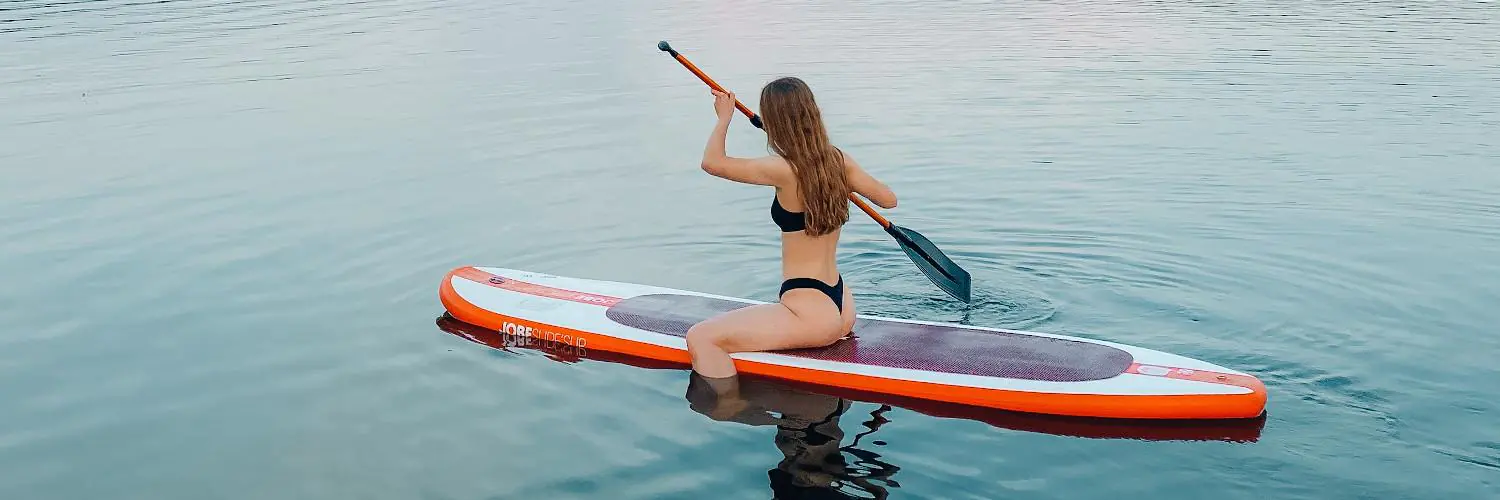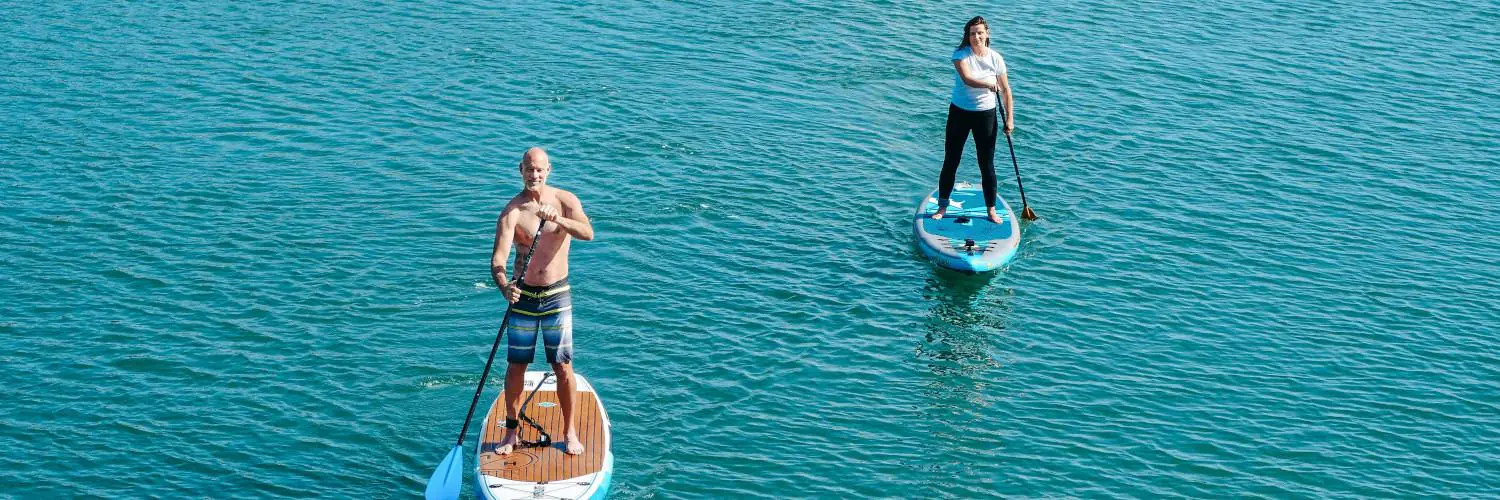Table of Contents
Sup Grip Pad Essentials: Enhance Your Stand-Up Paddleboarding Stability
Stand up paddle boarding, commonly abbreviated as SUP, requires balance, strength, and the right equipment to provide the best experience on the water. One essential accessory for any paddle boarder is the SUP grip pad. This component not only enhances the visual appeal of the board but more importantly offers traction and control. Grip pads are typically made from Ethylene Vinyl Acetate (EVA) foam, known for its durability and comfort. It is the same material found in yoga mats and has become the industry standard due to its ability to absorb weight and shocks effectively.
Choosing the right grip pad can significantly impact performance and enjoyment. A no-slip surface is crucial for maintaining stability during various paddling conditions, whether they be calm waters or more challenging waves. To cater to different preferences and board sizes, grip pads come in various sizes and can even be trimmed for a custom fit. Additional features, like a raised kick pad, provide extra grip and control for maneuvers and can aid in directional paddling.
When selecting a grip pad, it is important to consider factors such as the texture, size, and adhesive quality. Many options offer UV resistance to prevent fading and degradation from sun exposure, ensuring that the grip pad remains effective and maintains its appearance over time. With the variety of colors and patterns available, paddle boarders can personalize their boards while securing comfort and a firm footing for their aquatic adventures.
Sup Grip Pad Basics
A SUP grip pad is an essential component on a stand-up paddleboard, enhancing both comfort and traction. The material quality, design, and interaction with water play significant roles in the performance of a grip pad.
Material Quality and Types
The most common material used for SUP traction pads is Ethylene Vinyl Acetate (EVA) foam, renowned for its durability and comfort. This foam offers a cushion that absorbs weight and shocks, making it a preferred choice. Other materials include rubber and cork, each providing a different level of grip and sensory experience.
Design Elements
The design of a traction pad can vary, including its color, texture, shape, and size. Textured surfaces can range from diamond grooves to straight grooves, impacting the level of grip. The shape and the number of pieces in a traction pad can be designed to fit various board sizes and styles, while color options allow for customization to reflect personal style.
Comfort and Traction
A high-quality traction pad combines comfort with firm traction. The cushion of foam should provide sufficient comfort for extended use, and the textured surface must secure the paddler’s feet to the board to prevent slipping, which is critical for maneuvering the SUP.
Water Interaction
A SUP grip pad must interact efficiently with water. Quality pads are waterproof to prevent waterlogging and feature an adhesive that should withstand both freshwater and saltwater conditions, ensuring that the grip pad stays firmly in place without peeling during use.
Installation and Maintenance
Installing a grip pad on a stand-up paddleboard (SUP) not only enhances the board’s performance but also ensures safety and comfort during aquatic adventures. Precise installation is crucial for optimal functionality, and regular maintenance is necessary to address any quality issues and prolong the grip pad’s lifespan.
Applying the Grip Pad
To apply the grip pad effectively, one should begin with a clean and dry surface. The process involves peeling off the adhesive backing, which may be a strong 3M adhesive, known for its longevity and resistance to extreme conditions. Align the pad carefully to the desired area, maintaining consistent spacing, typically about one inch between sections. After placement, a firm press or use of a roller across the pad aids in securing proper adhesion. For the best adhesion quality, some suggest using a dough roller to smooth out the grip pad.
- Placement Guidance
- Step 1: Clean the SUP surface to remove any debris or residue.
- Step 2: Align the grip pad with the board, marking position if necessary.
- Step 3: Gradually peel the adhesive backing and apply it to the marked areas.
- Step 4: Use a firm pressure tool to ensure the pad is evenly adhered.
Cleaning and Care
Maintenance of a SUP grip pad involves routine cleaning to prevent buildup of salt, dirt, or other substances, which could lead to quality problems. Using a rag and water, one can gently scrub the surface of the grip pad, avoiding the use of harsh chemicals that may weaken the adhesive or damage the pad’s surface. In the event of persistent quality issues, contact customer assistance for further guidance or information about a refund or replacement policy.
- Maintenance Routine
- Step 1: Wipe the grip pad with a damp rag to remove surface dirt.
- Step 2: Rinse the pad with fresh water to clear out any remaining impurities.
- Step 3: Allow to air dry completely before using or storing the SUP.
Performance Enhancement
Enhancing performance in paddleboarding hinges on improving board control and stability, as well as maximizing comfort during use. The right SUP grip pad can make a significant difference for the paddleboarder, providing the necessary friction and cushioning to maintain maneuverability and control, while also reducing fatigue during extended sessions.
Board Control and Stability
A paddleboarder’s ability to maintain control and stability on the water is paramount. SUP grip pads with innovative designs, like the ProGrip X1, promote a natural hand position that boosts control and aids in precision maneuvering. Traction pads with features such as self-adhesive backing ensure a secure fit to the board, preventing slippage and improving stability. This stability is not just critical for performance surfers but also for those engaged in touring where consistent control is needed over longer distances.
- Diamond grid patterns: Proven to prevent foot slippage and allows for intricate footwork.
- Cushioned foam: Acts as a shock absorber, providing a stable platform even when stacking boards.
Maximizing Comfort During Use
Comfort plays a crucial role in a paddleboarder’s endurance and overall experience. Pads like the OAM Animal Grip offer both a warm feel and just the right degree of texture hardness, thus accommodating for different water temperatures. Traction pads that are easy to customize ensure that the grip meets the individual’s foot shape and size, reducing the risk of fatigue.
- Ergonomic design: Enhances comfort and reduces the chance of strain.
- Material hardness: Balances grip with foot movement, crucial for both warm and cold water conditions.
Whether a surfer or a recreational paddleboarder, incorporating a grip pad tailored for performance can elevate their experience significantly, offering enhanced control, stability, and comfort.
Compatibility and Customization
Selecting the right grip pad for a stand-up paddleboard (SUP) is crucial for achieving optimal performance and customization. Compatibility with various board types and the ability to accessorize are key considerations for paddlers looking to enhance their experience.
Matching Grip Pads to Board Types
SUP grip pads come in various designs to match different board types. The compatibility of a grip pad with a surfboard, all-around board, or a specific board length is dictated by the pad’s size, shape, and construction. For example:
- Surfboards: Generally require thinner, smaller tail pads for aggressive turns.
- All-around boards: Benefit from larger, full deck traction pads that provide grip and comfort for longer paddles.
- Board length: The size of the deck pad should correspond to the length of the board to ensure adequate coverage without overhang.
Accessorizing Beyond the Pad
Expanding upon deck grip with additional accessories can further tailor the SUP experience. These may include:
- Board Bags: Protect the board and grip pad during travel and storage.
- SUP Paddles: Match the grip pad’s performance features, like weight and durability.
- Fins: Optimize maneuverability and stability to complement the grip pad’s traction.
- Life Jackets: Essential for safety, they are chosen often to match the aesthetic of the board and pad.
Compatibility in terms of customizing board traction with supplementary accessories is essential to achieve a cohesive and functional SUP setup.
Purchasing Guidance
When looking for a SUP grip pad, it’s important to assess compatibility, available market options, and potential online shopping benefits. This section will guide a buyer through the key aspects of selecting the right product for their needs.
Selecting the Right Product
Size Matter: Choosing a grip pad with the right size and compatibility is crucial. The product should match the size of the paddleboard to ensure a seamless fit. Smaller boards require smaller pads, while larger boards benefit from larger pads. Some brands specify which paddle shafts their grips are designed to fit.
- Compatibility: Check if the grip is designed for specific paddle shafts.
- Installation: Look for grips with adhesive backing for easy installation; others might require glue or tape.
Understanding Market Options
A variety of brands, such as Barrel Point Surf and Kiwi Surfer, offer a range of SUP grip pads. Each brand comes with its unique features, but all aim to enhance comfort, grip, and durability.
- Materials: Commonly used materials include Ethylene Vinyl Acetate (EVA), known for its durability and comfort.
- Design: Designs like Diamond Tread provide additional grip and are an important consideration.
Online Shopping and Deals
Online retailers, including Amazon, offer a wide selection of SUP grip pads, often with benefits such as free shipping, easy contact us options for inquiries, and customer guarantee programs.
- Refund Policies: Look for online sellers that provide clear refund policies, in case the product does not meet expectations.
- Customer Reviews: Weigh your purchase decision with the experience of others.








